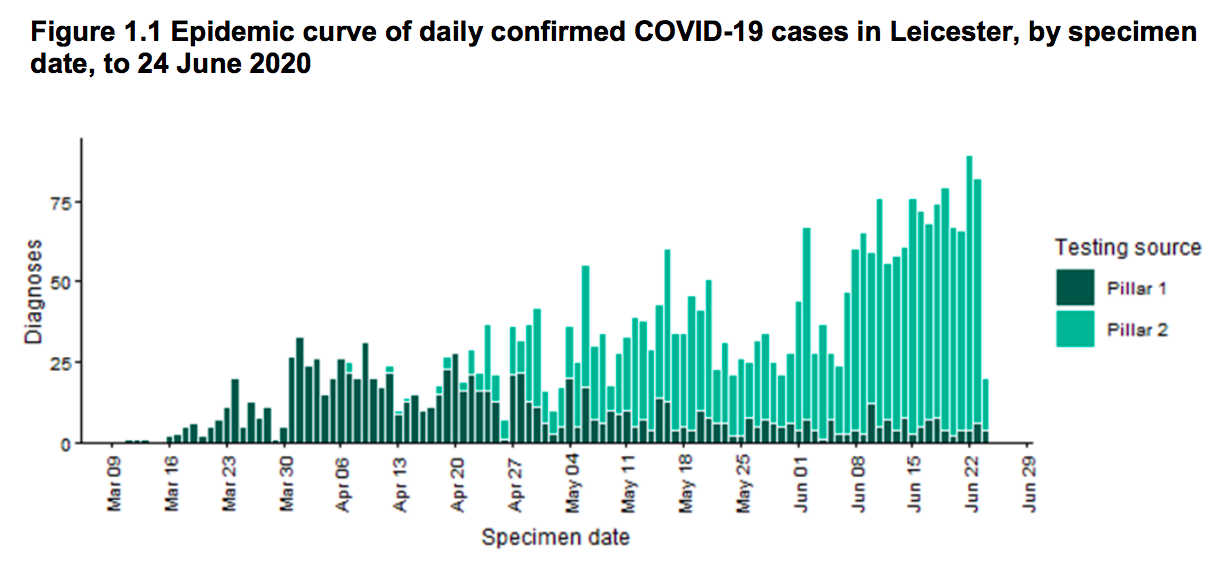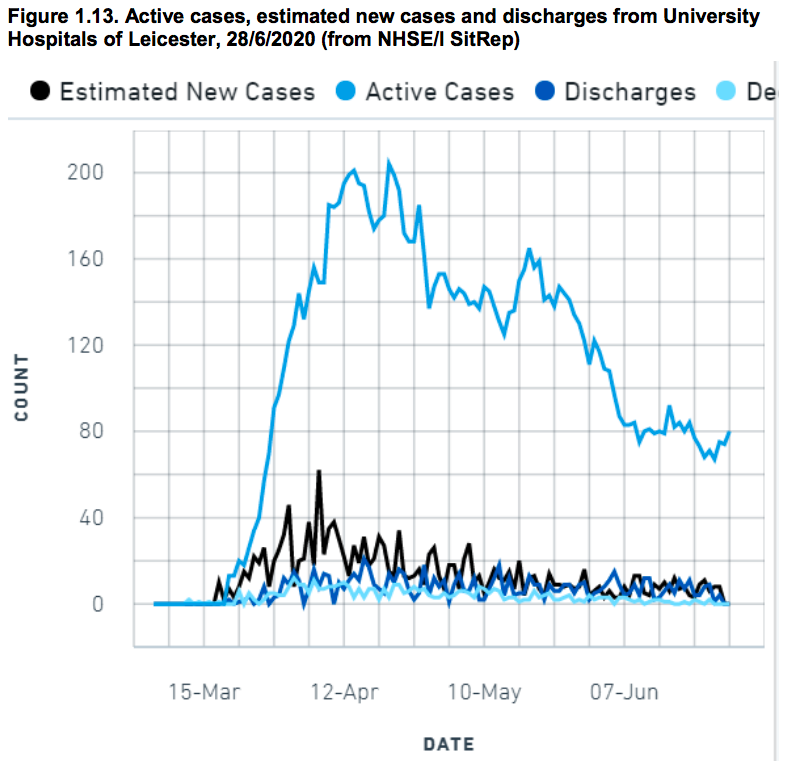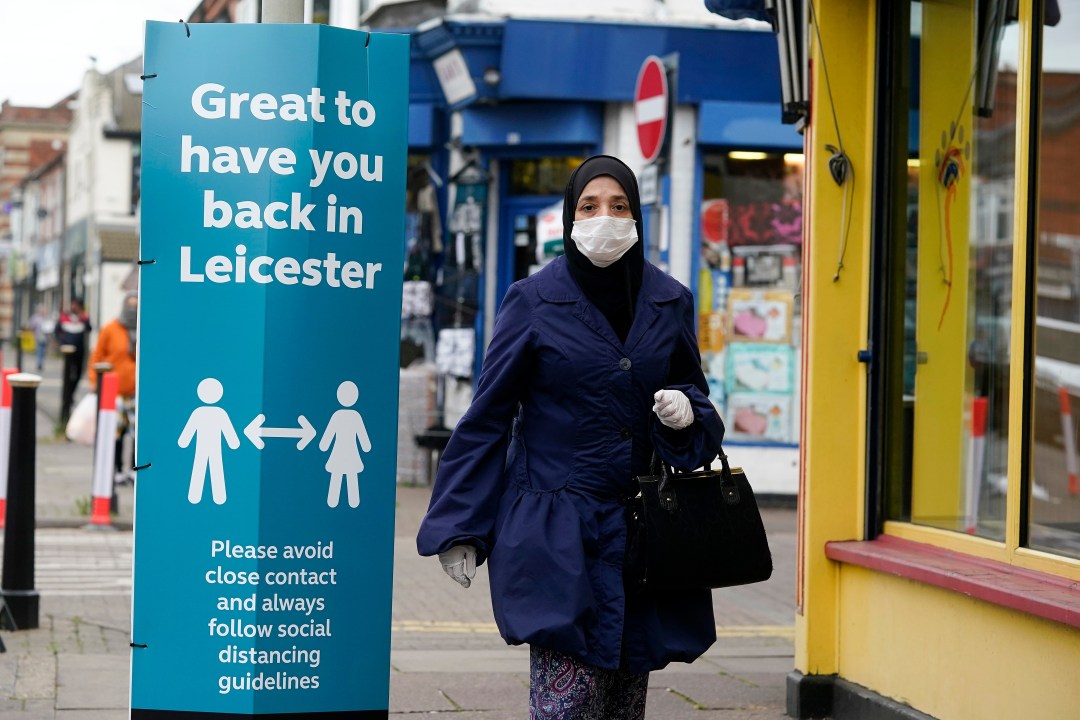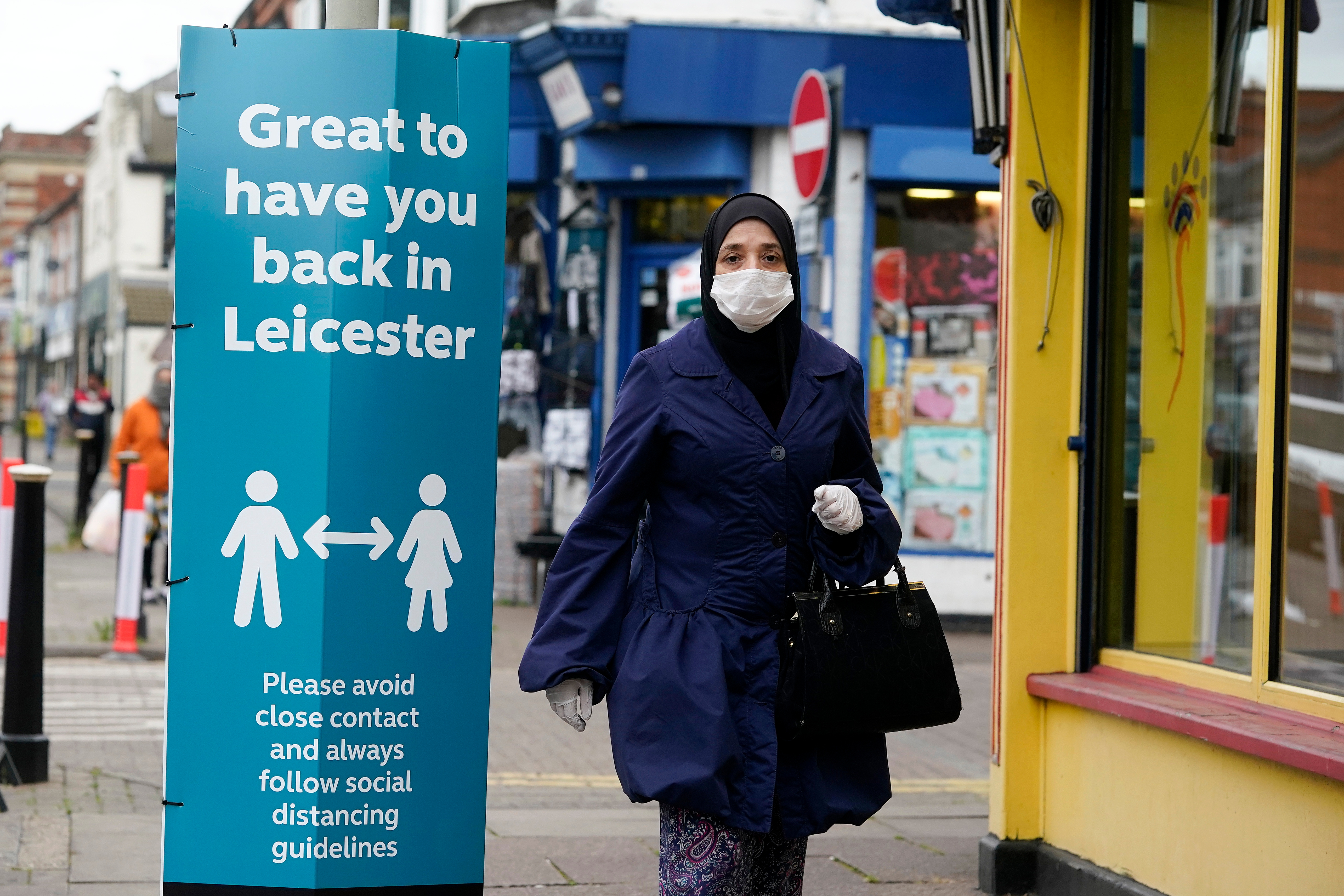Just why has Leicester been locked down, its economy placed back in the deep freeze and many more of its citizens condemned to lose their jobs? Since the announcement, the country has gone back into panic mode. Leicester, according to much reporting, is in the midst of a second spike – and is surely just the first of many towns and cities that will have to be placed back in lockdown. Listeners to the Today programme on Wednesday morning, in particular, will have been left in no two minds: we are in the foothills of a resurgence which could overwhelm the whole country.
Finally, on Wednesday evening, Public Health England published the full data for Leicester – along with a preliminary report from its rapid investigation team. And what does it conclude? It isn’t even sure there is a second spike. The increase in the number of cases could, it suspects, simply be a result of increased testing.
The data for infections shown in the Leicester report – like those which used to be shown on the daily Downing Street press briefing – is broken into two constituents: ‘pillar 1’ and ‘pillar 2’ cases. ‘Pillar 1’ refers to tests that are conducted in clinical settings – they are cases, for the most part, where people have been tested because they were showing severe symptoms and have sought medical attention. ‘Pillar 2’, on the other hand, is community testing – people who have been tested as part of their job or because they have asked for a test without having symptoms serious enough to warrant medical attention. Figure 1.1 shows very clearly that the increase in recorded cases of Covid-19 in Leicester in recent weeks is entirely down to pillar 2 cases.

Pillar 1 cases, by contrast, peaked in April and have fallen steadily ever since, with no detectable upswing. Figure 1.13 confirms that there has been no uptick in the number of cases being treated in Leicester hospitals. On the contrary, there has been a sharp fall in new infections since a peak in early April – with new infections at around 6 to 10 per day over the past four weeks. The number of people currently being treated has fallen steadily too.

Does that sound like a runaway second spike of an epidemic – or just an illusion created by an increase in testing? Public Health England’s rapid investigation team isn’t sure. There has been an increase, it says, in the percentage of tests coming back positive. But then again it states:
The rise in pillar 2 diagnoses is probably linked, in part, to the availability of testing to the general public, and at least one component of the rise in new diagnoses is due to a steadily increasing proportion of infections (symptomatic and asymptomatic) being identified rather than a true increase in the number of new infections occurring
In other words, Leicester’s ‘second spike’ could be a complete fiction. If there really were a worrying resurgence of Covid-19, surely we would be seeing a rapid increase in hospital admissions? But we are not. Could it be there is a wave of hospitalisations to come? The increase in pillar 2 cases has been gradual since April – and has not been followed by an increase in hospital admissions. If the increase in pillar 2 cases was going to feed into an increase in serious cases of the disease it would surely have happened by now.
What is remarkable is that the possibility that Leicester’s second spike could be illusory has hardly been mentioned all week. Virtually all news reporting has simply accepted it as fact that the city has experienced a worrying resurgence of Covid-19. It should have been obvious, as soon as the government ratcheted up testing at the end of April that a rapid increase in tests was going to result in an increase in cases being detected – that cases which would previously have gone undetected will now show up in the statistics.
According to antibody tests, around 4.4 million people (6.78 per cent of the population) have been infected by Covid-19. Yet the official number of cases – 313,000 – is less than one-tenth of this. There has been a vast number of asymptomatic cases and cases where people suffered only light symptoms. Over time, as testing has increased, so the chances of detecting these cases has increased. So, no, a spike in recorded cases does not of itself prove there is a real rise in cases. Leicester may not be experiencing increased cases at all, still less a ‘spike’ that justifies closing down its economy a second time.








Comments